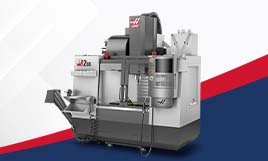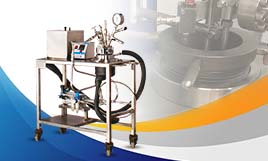The Essential Guide to Glass Testing: Ensuring Quality, Durability, and Strength
When it comes to materials used in everyday products, glass plays a crucial role in a wide range of industries, from construction and automotive to electronics and packaging. Whether it's a windowpane, a smartphone screen, or a glass bottle, glass must meet specific standards for strength, durability, and quality. This is where glass testing comes into play, ensuring that the glass products we use every day meet the required specifications.
In Glass Testing guide, we will walk you through the chemical properties of glass, the different glass testing methods, and the importance of glass durability and strength testing. By understanding these concepts, you can better appreciate the role of glass testing in guaranteeing superior glass quality.
What is Glass Testing?
Glass testing involves a series of procedures to evaluate the physical and chemical properties of glass materials. This process helps determine whether a glass product meets safety, performance, and quality standards. Glass testing ensures that the material is suitable for specific applications, whether it's for structural integrity in buildings, durability in consumer electronics, or even the safety of glass containers used in food and beverage packaging.
Key Glass Testing Methods
There are several glass testing methods that manufacturers use to assess different characteristics of glass. Each method serves a specific purpose, depending on the intended use of the glass. Let's explore some of the most common testing techniques:
1. Strength and Durability Testing
Strength testing focuses on determining how much force glass can withstand before breaking or cracking. Durability testing measures how well the glass performs over time under various environmental conditions. These tests are essential to ensure that glass materials can withstand impacts, temperature changes, and other stresses they might face during their lifetime.
One of the most common methods for testing glass strength is fracture toughness testing, which measures the material’s resistance to crack propagation. This type of testing is especially important for glass used in construction and automotive applications, where safety is a priority.
2. Chemical Properties Testing
The chemical properties of glass are crucial in determining its suitability for different applications. Testing the chemical composition of glass helps identify the types of elements and compounds present, which directly impact the glass’s behavior in various environments.
For example, alkali resistance testing evaluates how glass reacts to different alkaline substances, while corrosion testing determines how glass performs in exposure to moisture or chemicals over time. These tests are especially important for glass used in environments that involve high humidity or exposure to chemicals, such as laboratory glassware or marine applications.
3. Thermal Testing
Glass can expand or contract when exposed to temperature changes. Thermal testing measures how a glass product behaves under heat stress. This is crucial for glass used in industries where temperature fluctuations are common, like in cookware, aerospace, and automotive industries. Thermal shock resistance testing is a key method to assess how quickly glass can adapt to sudden temperature changes without breaking.
4. Optical Properties Testing
For glass products like windows, mirrors, or lenses, optical properties are essential. This includes tests for light transmission, reflectivity, and color consistency. Optical testing ensures that glass products provide the desired visual clarity and optical performance, making them suitable for applications like eyewear, automotive windshields, and architectural glazing.
Why is Glass Quality Testing Important?
Glass quality testing is crucial for ensuring that glass products meet safety and performance standards. Without rigorous testing, defective glass products can pose risks, including:
-
Customer dissatisfaction: Low-quality glass can lead to defects such as scratches, haziness, or poor durability, diminishing the customer experience.
Ensuring that glass meets the necessary standards for strength, durability, and safety is not just essential for protecting people, but also for maintaining brand reputation and avoiding costly product recalls.
Applications of Glass Testing product
Glass testing is applied in numerous industries, each with its own unique requirements. Here are a few examples of how glass testing impacts real-world industries:
1. Construction Industry
In construction, glass is used for windows, facades, and structural elements. Glass used in skyscrapers, commercial buildings, and homes must undergo strength and durability testing to ensure it can withstand wind pressure, impacts, and weather conditions. Safety glass, such as tempered or laminated glass, is a critical component in building design for added protection.
2. Automotive Industry
In vehicles, glass is used in windshields, side windows, mirrors, and rearview mirrors. Glass testing in the automotive industry focuses on impact resistance, optical clarity, and UV protection. Toughened glass is essential for safety in the event of an accident, and advanced testing ensures that the glass meets stringent regulations for both strength and visibility.
3. Electronics Industry
From smartphone screens to televisions, glass is widely used in consumer electronics. Testing the durability and scratch resistance of glass is important in ensuring that these devices can withstand regular use and drops. Glass testing in electronics also evaluates optical properties to ensure clear screens and high-quality visuals.
4. Food and Beverage Packaging
In the packaging industry, glass bottles and jars are commonly used for food and beverages. Chemical resistance testing ensures that the glass does not leach harmful substances into the product, while strength testing guarantees that the packaging can handle transportation and handling without breaking.
Glass Tester: The Tool You Need for Accurate Testing
To carry out these various glass testing procedures, specialized equipment is required. One such tool is the Glass Tester from Testometric, designed to perform precise testing for strength, durability, and other key properties. With features like load testing, thermal testing, and chemical property evaluation, this device ensures that your glass products meet the highest standards.
Glass Tester Features:
Applications:
Conclusion
Understanding glass testing and its importance in evaluating the chemical properties, durability, and strength of glass materials is essential for industries that rely on glass in their products. Whether you are in construction, automotive, electronics, or packaging, glass testing ensures that the products you produce or purchase are safe, durable, and of the highest quality. By utilizing tools like the Glass Tester, you can guarantee that your glass products meet the necessary standards for performance and safety.








